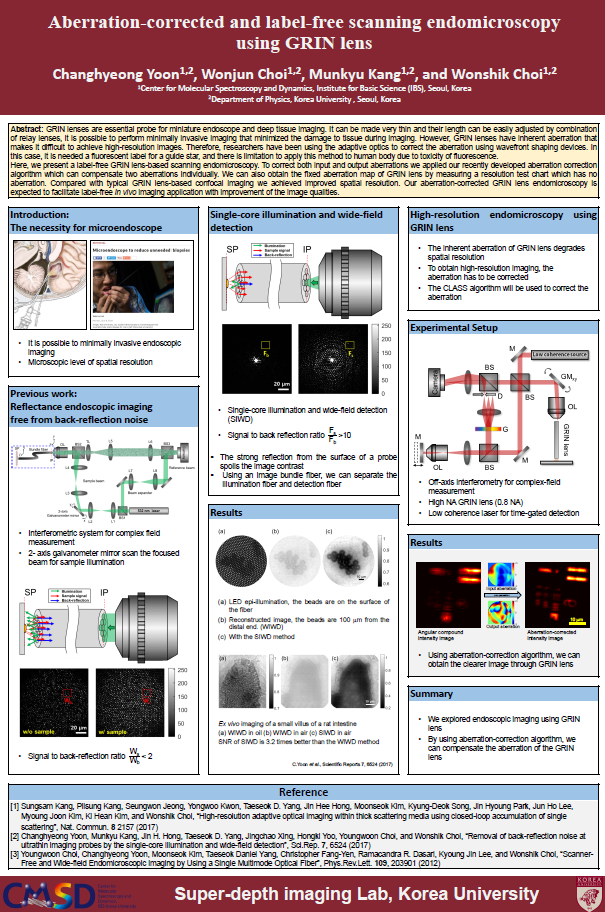mainmenu
Aberration-corrected and label-free scanning endomicroscopy using GRIN lens
2019 IBS AOI Conference

GRIN lenses are essential probe for miniature endoscope and deep tissue imaging. It can be made very thin and their length can be easily adjusted by combination of relay lenses, it is possible to perform minimally invasive imaging that minimized the damage to tissue during imaging. However, GRIN lenses have inherent aberration that makes it difficult to achieve high-resolution images. Therefore, researchers have been using the adaptive optics to correct the aberration using wavefront shaping devices. In this case, it is needed a fluorescent label for a guide star, and there is limitation to apply this method to human body due to toxicity of fluorescence.
Here, we present a label-free GRIN lens-based scanning endomicroscopy. To correct both input and output aberrations we applied our recently developed aberration correction algorithm which can compensate two aberrations individually. We can also obtain the fixed aberration map of GRIN lens by measuring a resolution test chart which has no aberration. Compared with typical GRIN lens-based confocal imaging we achieved improved spatial resolution. Our aberration-corrected GRIN lens endomicroscopy is expected to facilitate label-free in vivo imaging application with improvement of the image qualities.
References
[1] Sungsam Kang, Pilsung Kang, Seungwon Jeong, Yongwoo Kwon, Taeseok D. Yang, Jin Hee Hong, Moonseok Kim, Kyung-Deok Song, Jin Hyoung Park, Jun Ho Lee, Myoung Joon Kim, Ki Hean Kim, and Wonshik Choi, “High-resolution adaptive optical imaging within thick scattering media using closed-loop accumulation of single scattering”, Nat. Commun. 2017, 8, 2157
[2] M. E. Llewellyn, R. P. J. Barretto, S. L. Delp, and M. J. Schnitzer, “Minimally invasive high-speed imaging of sarcomere contractile dynamics in mice and humans”, Nature 2008, 454, 784-788


